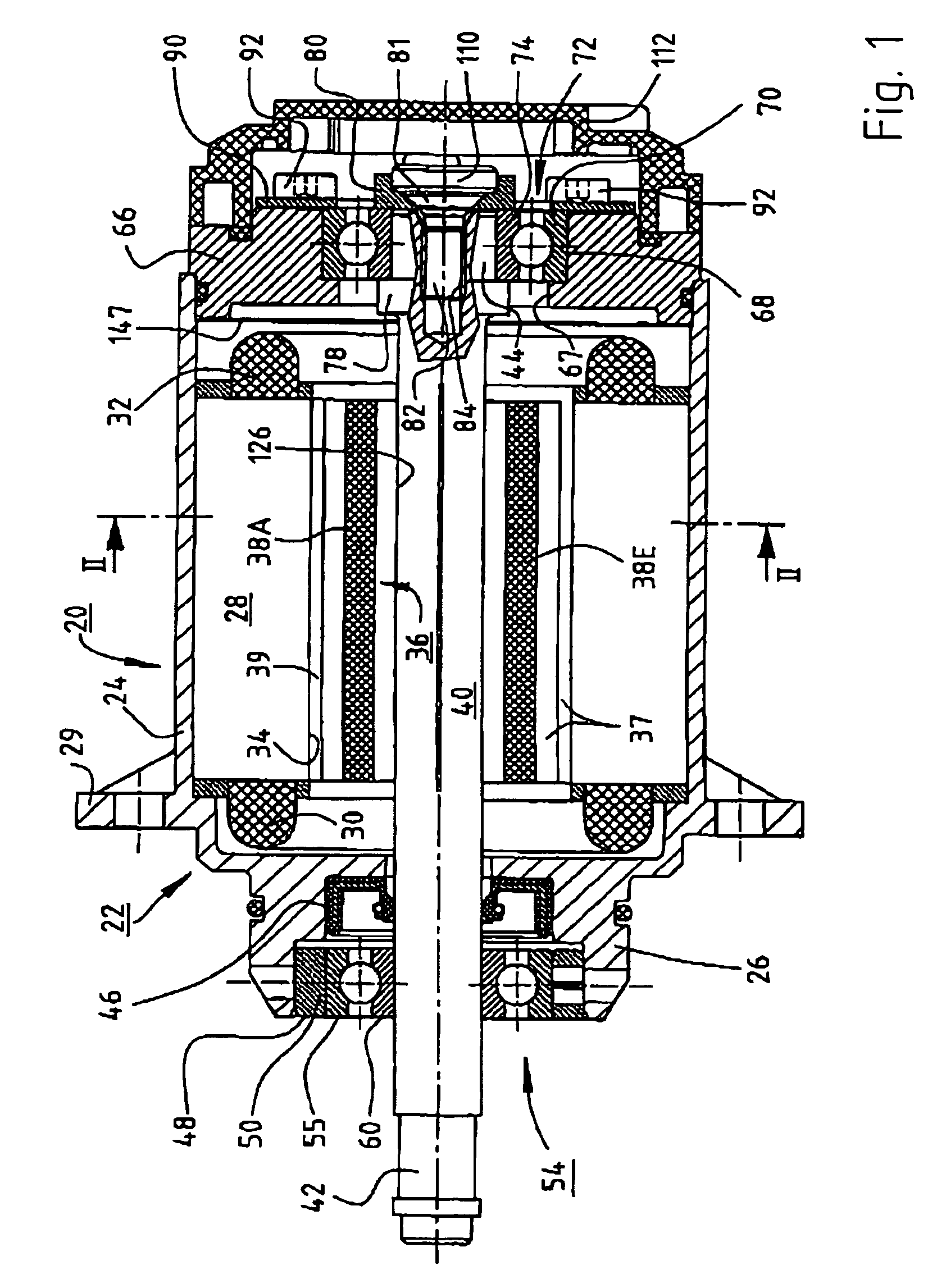Electric motor with poles shaped to minimize cogging torque
a technology of electric motors and poles, applied in the field of electric motors, can solve the problems of high specific weight (weight/power ratio), unfavorable power to motor volume or motor power to motor weight, and insufficient power of such motors with ironless stators
- Summary
- Abstract
- Description
- Claims
- Application Information
AI Technical Summary
Benefits of technology
Problems solved by technology
Method used
Image
Examples
Embodiment Construction
[0016]FIG. 1 shows an electronically commutated internal rotor motor 20 with a housing 22 having a cylindrical housing portion 24, an A-side bell 26 and a securing flange 29.
[0017]In the cylindrical housing portion 24, there is arranged the lamination stack 27 (FIG. 2) of an external stator 28 whose coil ends are designated 30 and 32. Stator 28 has an internal recess 34 in which is arranged an eight-pole internal rotor 36 having a lamination stack 37 made of an alloy according to German Industrial Standard DIN 46400, sheet 1, preferably alloy V400. Preferably, eight permanent magnets 38A through 38H (see FIGS. 2–3) are arranged on a shaft 40, whose drive end is designated 42 and whose inside shaft end is designated 44. An air gap 39 separates stator 28 from rotor 36. Such a motor can be called a “permanently excited synchronous internal rotor machine” or a “three-phase motor with impressed sinusoidal currents.”
[0018]In the A-side bell 26, in the usual manner, a seal 46 is provided f...
PUM
 Login to View More
Login to View More Abstract
Description
Claims
Application Information
 Login to View More
Login to View More - R&D
- Intellectual Property
- Life Sciences
- Materials
- Tech Scout
- Unparalleled Data Quality
- Higher Quality Content
- 60% Fewer Hallucinations
Browse by: Latest US Patents, China's latest patents, Technical Efficacy Thesaurus, Application Domain, Technology Topic, Popular Technical Reports.
© 2025 PatSnap. All rights reserved.Legal|Privacy policy|Modern Slavery Act Transparency Statement|Sitemap|About US| Contact US: help@patsnap.com



